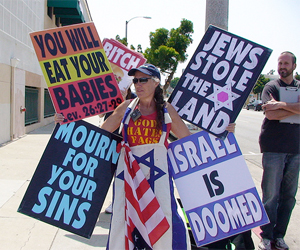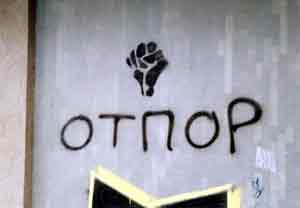
Photo Courtesy of Not In Our Town
Last week, I wrote about a strange nonviolent technique used by Gunn High School and its community to deflect Westboro Baptist Church’s intrusive hate-speech. It turns out that Gunn’s creative reaction to adversity is not an isolated incident, but part of a national Not In Our Town (NIOT)-dubbed movement now stationed on a website which just launched Tuesday.
The interactive site is on a mission to connect “people who are responding to hate and working to build more inclusive communities” by documenting their hostility-defusing tactics on film and sharing them with the public, which was the case with Gunn. There’s a video that shows the time when 10,000 residents in Billings, Montana—the town that inspired the NIOT movement—hung paper menorah’s outside their windows after a rock was thrown through the bedroom window of a six-year-old boy who had placed a menorah there for Hannukah. The boy’s mother says, “I would like to have thought that if this [hate crime] had happened to my Native American community that they [my neighbors] would have put a Native American symbol in their window, or if it happened to the gay or lesbian community that they would have put a pink triangle in their window.”
Racism, sexism, and overall hate are coolly countered by these neighborhood groups (there’s also Not In Our School contingents), which a US map on the site’s homepage shows have sprung up across the nation in response to the thousands of hate crimes that happen yearly. A video shows Fremont, California where residents wore turbans and hijabs for a day to stand in solidarity with a local woman who was shot to death for wearing the Muslim garb. “That’s what we see shining through on NIOT.org—hope and action in the face of hatred and fear,” NIOT filmmaker, Patrice O’Neill told MoJo. “Now we have a place to share these ideas and actions. You have the power to change the atmosphere, not just in our town, but in our country, in our world.”
You can read more about the creation of NIOT.org at its website.
Follow Titania Kumeh on Twitter.













